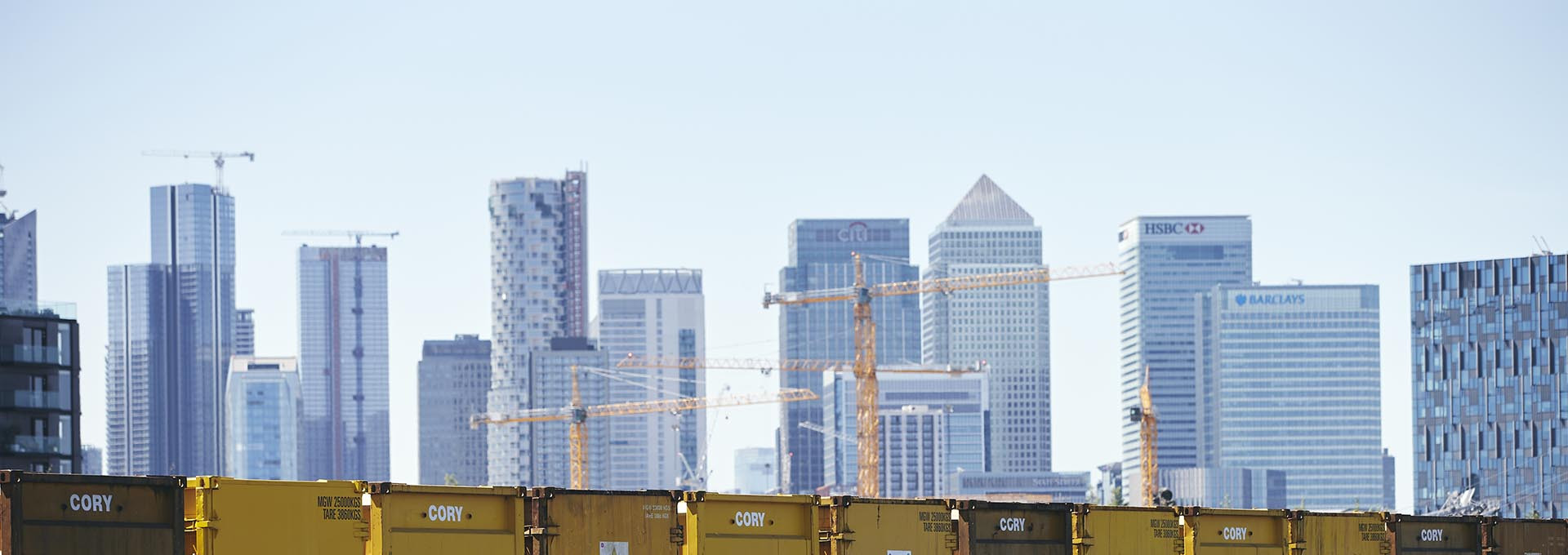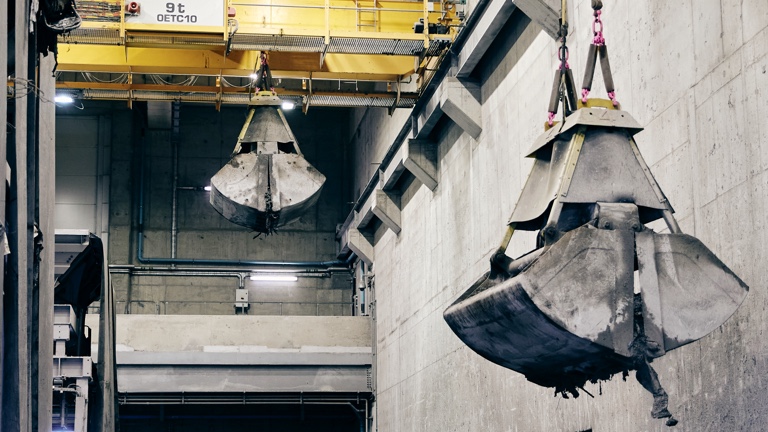Project benefits
Over 2 million tonnes of London’s non-recyclable waste must either be sent to landfill or shipped overseas. London has a clear waste infrastructure capacity gap which urgently needs investment. This is because many of these overseas markets no longer accept non-recyclable waste imports, and only two of the current 11 landfill sites used for London’s waste will still be operational after 2025.
Yes. Riverside 2 will create at least 75 new jobs with apprenticeship opportunities in engineering, river logistics and business management. Riverside 2 will require a workforce in excess of 6,000 people over the lifetime of construction period; a real benefit to the local economy. Before we start any work on site, we will liaise with the London Borough of Bexley and submit an Employment and Skills plan. This will need to be approved by the London Borough of Bexley as the Relevant Planning Authority.
We are proud of our contribution to the community, whether that be through local initiatives (such as employee volunteering or fundraising activities) or through broader community, educational and STEM outreach programmes. These programmes include the Industrial Cadets, the Engineering for a Cleaner World programme with Crossness Power Station and Bexley Eco-Fest with London Borough of Bexley. Cory’s Community Fund supports activities in our local communities that improve local people’s lives, with eligible organisations able to receive a grant of up to £7,500.
We’re also an active member of the Belvedere Community Forum and attend their meetings to update members. In addition, we sponsor the Bexley Borough Neighbourhood Watch.
Local environment, ecology and landscape
We prepared an Environmental Statement as part of our Develop Consent Order application which sets out the full potential environmental impacts of our proposal. The conclusions and evidence in this Statement have been reviewed by the Secretary of State.
We’ve found that there will be negligible effects on the key air quality criteria such as NO2, PM2.5 and PM10 concentrations at the most sensitive residential areas as a result of our proposed facility. Our existing facility has operated within air quality guidelines since its commissioning thanks to our use of the latest technology which is designed to mitigate emissions as far as possible. Similar technology will be employed at the new facility.
The application documents, including our Environmental Statement, are available on the Planning Inspectorate's website.
Furthermore, the operations at Riverside 2 will be managed under an Environmental Permit that is issued and regulated by the Environment Agency. This Permit will include stringent air quality management, monitoring and reporting criteria.
We have undertaken an extensive range of surveys of local habitats and wildlife and have consulted with Natural England, the government’s ecological advisor. We will ensure that disturbance to wildlife is minimised during construction (including protecting the neighbouring Crossness Nature Reserve) and will look for opportunities to enhance existing habitats or create new habitats as part of our proposals.
Before we start construction work, we will need to draft a number of strategies which will need to be considered and approved by the London Borough of Bexley in its capacity as the Relevant Planning Authority. These strategies will apply to areas such as our management and protection of biodiversity, as well as agreeing the planting of shrubs and trees as part of our landscaping works. Our Biodiversity and Landscape Mitigation Strategy will ensure effects are minimised; where biodiversity is lost, it will be offset in the local area which will result in a 10% net gain in biodiversity.
Cory and UKPN deliberately routed our cable options along public highways wherever possible (in the road, verges or footways, where the ground has already been dug up/disturbed) to minimise environmental effects, including to potential buried historic assets.
As part of the requirements set in our Development Consent Order, we will be agreeing our approach to identifying and / or preserving archaeology on site. This means we’ll need to agree with the Local Planning Authorities areas where further archaeological investigations are required and the nature and extent of those investigations. The intention is that we can then preserve by record or in situ any archaeological features that are identified.
Throughout the consultation process we consulted on three different building types and have chosen the stepped roof design for the application. We considered the comments we received during consultation and various factors - such as visual impact and our ability to generate renewable energy using solar panels.
Based on feedback and our own assessments, we came to the conclusion that the stepped roof building form design presents the best overall solution.
This design will also help keep the scale, height and size of the proposed buildings to a minimum, which will minimise shadowing on the surrounding areas, including the important Crossness Nature Reserve and the Thames Path.
We have carried out a full assessment of the impact of the proposals as submitted in terms of noise and our assessments show that any noise or vibration we make during construction and operation would be insignificant. We have fed these results into the design process to ensure we minimise any impact on local residential areas or properties.
We are not seeking the closure of any footpaths to allow construction of Riverside 2. On the cable route we will need to put in place temporary restrictions and diversions, but due to the small-scale nature of the cable laying works we will look to minimise the length of time these restrictions are in place. As with many aspects of our project, we will need to agree detailed management plans for any closures and / or diversions with both the Local Planning Authority and the relevant Highway Authority before any of these elements can start.
We have already discussed flood risk and appropriate mitigation with the Environment Agency and have agreed a minimum finished floor level so that our plant would not be susceptible to flooding. Our proposed site is protected by an existing flood protection embankment.
No. The technologies we use are designed to avoid emissions of odour. The interior of the tipping area is kept under negative air pressure which ensures air is drawn into the facility when doors are opened to accept deliveries etc. This helps to keep any dust and odour within the buildings.
If you experience odour, please report it to the Environmental Health Officer at London Borough of Bexley, so the source can be identified and action taken.
We prepared an Environmental Statement as part of our application documents, which sets out potential environmental impacts of our proposal. This Environmental Statement has now been considered independently and in detail by the Planning Inspectorate during the examination period.
The application documents, including our Environmental Statement, are all available on the Planning Inspectorate's website.
Transport
Like the existing facility, Riverside 2 will seek to make extensive use of the river to remove truck journeys from London’s roads. Doing so will remove a further 80,000 truck journeys from London’s roads.
As part of our Development Consent Order, we will not be able to start any of the approved works until a construction traffic management plan for that part has been submitted to and approved by the relevant planning authority (in consultation with the relevant highway authority and Transport for London). This traffic management plan will then be used during construction to minimise any traffic impacts.
Any traffic movements generated by Riverside 2 would be relatively small in relation to existing flows (less than 2% increase in daily traffic movements on the local roads, based on the worst case). Under normal operations our consent limits us to 75 lorries accessing our facility each day. This can be increased in the highly unlikely event that our jetty is unavailable for use but this has never occurred since we started operating at this site in 2011.
UKPN, the electricity company that operates the local network, has confirmed that they will use ‘ducting’. This means they can dig up short sections of road at a time, rather than digging up longer stretches, which would be more likely to cause greater disturbance.
Our decision on which cable route to use has taken into account engineering advice from UKPN, input from local authorities and feedback from the community about any potential traffic effects. Our construction traffic management plan will be submitted to and approved by the Local Planning Authority and relevant Highway Authority before work starts and will ensure any disruption is minimised.

